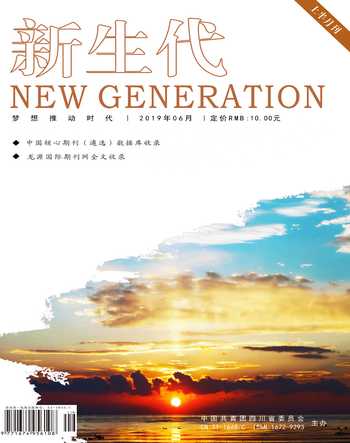On Aesthetic Mechanism of Translation
2019-09-10高新
高新
Abstract: The study of the translator's psychological activity is an essential part of the translation process. The process of translation is a complex process of psychological activity, which involves the translator's language psychology, aesthetic psychology and cultural psychology. To study the translator's psychological activities must be based on the theory of psychology and its branches. The process of aesthetic psychology and aesthetic characteristic are two important concepts in aesthetic psychology, which has always been attached importance by scholars. This paper will stress the benefit of aesthetics for the process of translation.
Keywords: Aesthetic subject and object, Aesthetic interpretation process
Introduction
Whether it is traditional translation theory Or modern translation theory, there exists a closely established relation with philosophy and aesthetics from theoretical propositions to methodology. The skill of translation depends to a great extent on translator’s aesthetic Perception of the True Value of Literary Works. From the strict sense, Western classical translation theory is a part of classical literary theory, while the translation theory in the history of Chinese translation is probably the aesthetic exploration or comment for translation.
This paper aims to settle with some mistakes in the translation by way of aesthetic mechanism, we need to take a detailed explanation of what aesthetics is, only a good knowledge of aesthetic mechanism can we reduce the mistakes and deal with the problems in the following task.
1.The definition of aesthetic subject and object
The aesthetic subject of the translation is the translator itself, the effect of beauty on the translation works can be achieved in the connection with the aesthetic composition of the source language as well as with the translator's aesthetic standard, only with the both two interrelated and united, the translation works have aesthetic effect and the translation can make the reader more receptive.
Aesthetic object refers to the objective things people's aesthetic behavior involves. Without doubt, The aesthetic object of translation is the original text, how to evaluate the aesthetic standard of the article, and the aesthetic value plays a key role. The first is beauty in the language form of the original text. The other is non-representative elements.
2.The aesthetic standard of translation
It is necessary that whether a good translation work is of aesthetics or not depends on the requirement of aesthetic standard. The standard underpins a view of dialectic and entirety. Translation is an inter lingual activity, which is indispensable to concrete bilingual differences. The aesthetic standard of translation should be established in a relative way. Because different languages have different lingual regularity, aesthetic standard can be achieved relatively, what’s more, different patterns result in rich beauty of form.
3.The process of translation aesthetic interpretation
In essence, the aesthetic interpretation of the text refers to the translator interprets the artistic concept and imagery the author is endowed with through the text shape, that is, sound, word, sentence and article. In the following, we will have a detailed interpretation of the sound and word of source text in combination of the translation practice.
3.1.The interpretation of sound in translation
The interpretation of sound to interpret the course of voice configuration of source text. Vocal beauty of source text need to be analyzed from next steps, the aesthetic attribute of voice on voice content demonstrates three parts, the first is the symbolic meaning of voice of source text, then the inner emotion the voice of source text expresses and resonate emotionally with the author, the last is evoking the image of the things that send out voice in the brain.
Here are some examples to demonstrate the essence of the interpretation of sound in translation practice.
eg (1). ST: He swings the fish from the water, a wild stripe flicking and flashing into the boat, and grabs the line, twisting the hook out, holding the fish down in the footrests.
TT: 他拽著鱼线,鱼露出水面,那是一条带着条状的鱼,野性十足,身上闪烁着光芒,他一边拉紧鱼线,一边手扭去鱼钩,稳稳地把鱼放在脚蹬下。
The interpretation of source text: in this sentence the verbs like swings (摇晃), grabs(抓住), twist(扭动)and hold(握住)have stronger rhythm and produce a vivid image. The words “ flicking” and “ flashing” have something common in voiceless consonant /f/ , which show clearly the sound of water and the brilliant sunlight. In other respect, among the words “water”, “boat”, “out” and “footrest” the end syllables of every word rhyme, which make the sentence stronger sense of rhythm and beauty.
4.Conclusion
The approach to aesthetic mechanism is beneficial for the improvement of target text in conveying the deep structure of source text. By the detailed explanation of aesthetic subject and object, we have a better understanding of the use of aesthetic mechanism for the interpretation of source text.
